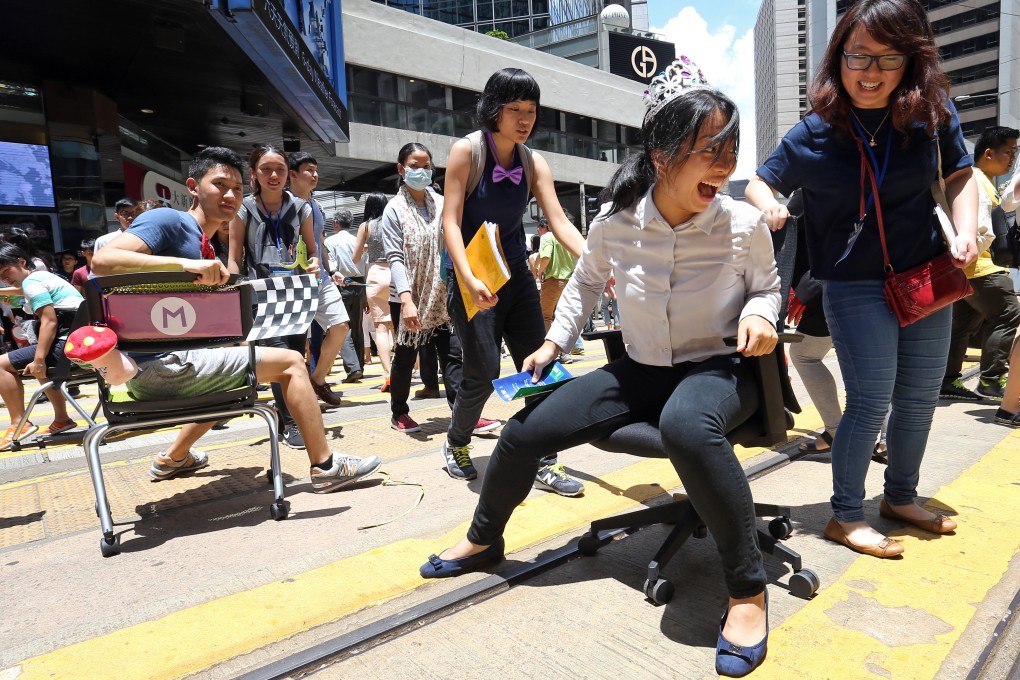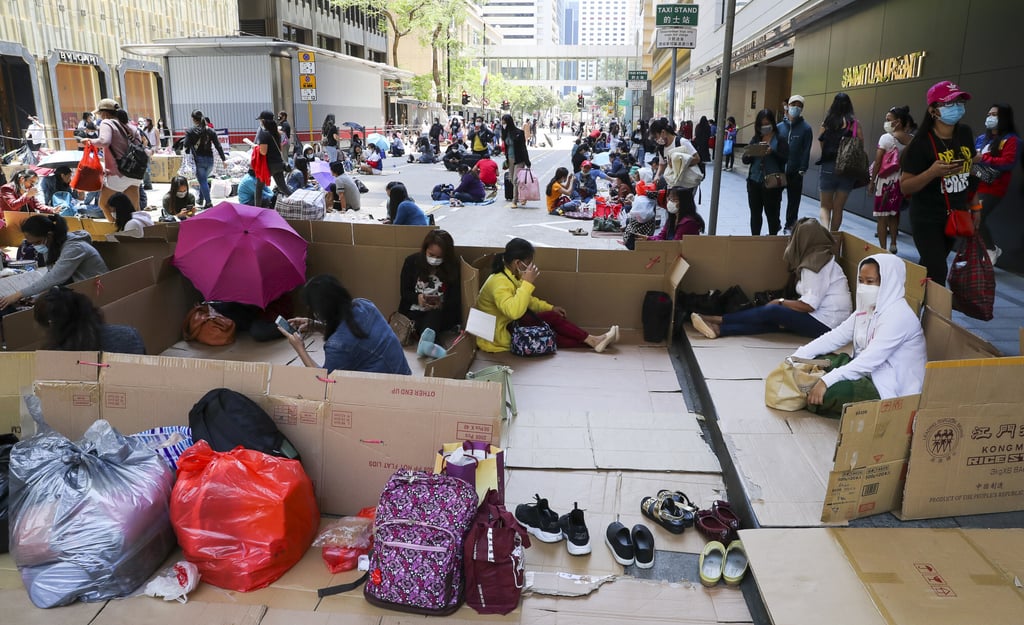Opinion | Hong Kong’s random efforts to be pedestrian-friendly should give way to a truly bold makeover
- Hong Kong needs quality public spaces to ease congestion and improve quality of life. This requires citywide planning rather than piecemeal efforts
- Creating a pedestrian zone without sound rationale would not add value for the public or the environment

Imagine if, every Sunday, a crowd sat at the intersection of Wall Street and Broadway in New York City. A passer-by could mistake the scene for a silent protest or a sit-down strike. The spectacle would be an embarrassment to the financial capital of the world.
Such a phenomenon is the norm on any given Sunday in Hong Kong. We are about the only advanced economy that closes off a section of the core business district for domestic helpers to occupy. But why, in particular, the intersection of Chater Road and Ice House Street?
According to the Transport Department, the decision to have vehicle-free zones at designated streets was to improve the environment and safety for pedestrians. Closing off Theatre Lane or Lan Kwai Fong at a certain time certainly makes sense, considering the foot traffic at these locations during particular hours. But with paper boxes, food crumbs and trash left behind every Sunday night and the significantly reduced traffic in Central on weekends, there are no grounds for the environmental and safety claims about Chater Road.
The issue is not about the domestic helpers, who have earned their days off and should be able to enjoy the city’s public spaces. The issue is not about finding places for them to gather either. With close to 400,000 domestic helpers in Hong Kong, the part-time closing of Chater Road and Ice House Street for 17 hours on Sundays is hardly helpful. It is about the need for sound policy to create a more liveable environment for Hong Kong.

The trial event offered a rare glimpse of what a breathable Central could be. What if we could enjoy this open space every day, any time of the day? What if we could transform Des Voeux Road Central with greenery, water features, public art, restaurants and cafes?
